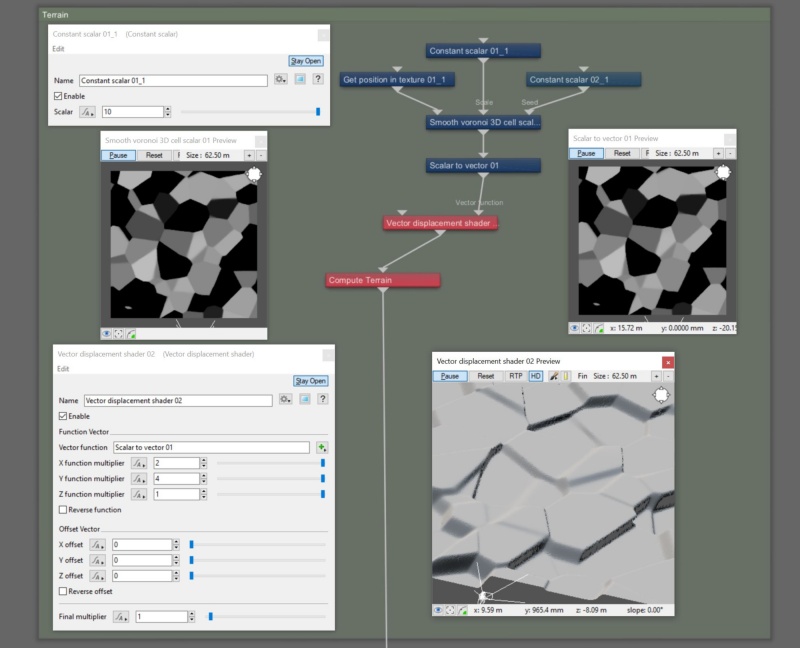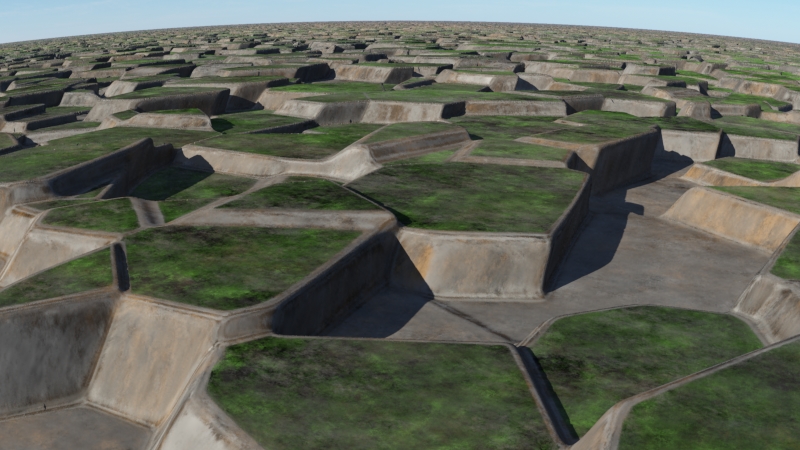Scalar to Vector
Overview[edit]
The Scalar to vector node converts the Input scalar into a vector. This conversion happens according to the node input type conversion rules which are described in the Node Input Type Conversion documentation.
When converting a scalar to a vector, each component of the vector is simply set to the value of the scalar :
-
vector.x becomes scalar
vector.y becomes scalar
vector.z becomes scalar
These nodes have no other settings apart from the Input node.
Settings:
- Name: This setting allows you to apply a descriptive name to the node, which can be helpful when using multiple Scalar to Vector nodes in a project.
- Enable: When checked, the node is active and the conversion operation will take place. When unchecked the values assigned to its Main Input, if any, are passed through, otherwise a value of 0 is passed through.
A vector is a set of three scalars, normally representing X, Y and Z coordinates. It also commonly represents rotation, where the values are pitch, heading and bank.
A scalar is a single number. 1, 200.45, -45, -0.2 are all examples of scalar values.
A single object or device in the node network which generates or modifies data and may accept input data or create output data or both, depending on its function. Nodes usually have their own settings which control the data they create or how they modify data passing through them. Nodes are connected together in a network to perform work in a network-based user interface. In Terragen 2 nodes are connected together to describe a scene.


